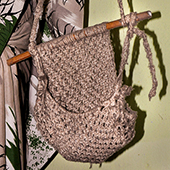West Bengal is a harvest land for handicrafts and handlooms. Thus the Bengal crafts have won an important place for themselves in the handicraft market of India. As the city comes with the perks of low labor cost and ready availability of raw materials than other metro cities, the occupation still flourishes with time. This renowned heritage is practiced in every district, each incorporating their style to the traditional method. Crafts like sola pith, dhokra art, and jute handicrafts are well-known activities among the natives. Jute, a natural fiber also known as golden fiber, is one of the cheapest and the strongest of all-natural fibers, and due to its eco-friendliness, it is considered as fiber of the future. India is the largest producer of jute goods after cotton products in the world, while Bangladesh is the largest cultivator of raw jute. In the country, jute is grown specifically in the eastern states like West Bengal, Bihar, Assam, Tripura, Meghalaya, Orissa, and Uttar Pradesh in which almost 50 percent of total production comes solely from West Bengal.
Jute products, mainly bags, are much stronger and more nature friendly than other contemporary options like poly bags, cotton bags, paper bags that drastically affect the ecosystem. Nowadays, jute products come with a fancy, stylish dash, thus placing a strong completion against their counterparts. Macramé is a kind of jute bag largely practiced in parts of Kolkata that are named after the knots used in its making. The macramé knots though venerable, with multiple loops, form a series of patterns, thus producing elegant ornaments and accessories. This set of knots include a square knot, a half knot, a half hitch, larks head knot, and coil knot are widely used to create jewelry, bags, mats, plant hangers, and wall hangings. The making of Macramé involves certain hand movements that prove to be a great exercise method for fingers and the wrist. The hand joint seems loose and strong with regular practice of tying macramé knots. Jute craft making is a hobby for many women artists. Mrs. Nupur Bhawal from West Bengal is spending her leisure time making handicrafts. She has been practicing these crafts since many years. Her hobby is turned into a profession.





